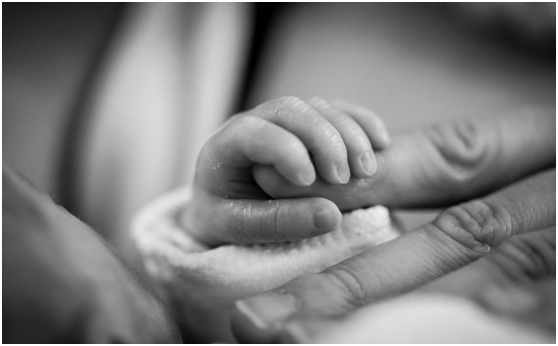According to an estimate by the United Nations, 385,000 births occur every day, leading to approximately 140 million more people each year. Every birth is scary and stressful in the delivery room- whether you are a new parent or delivering your third child. The World Wide Web provides many details on childbirth to prepare you for good parenting and a challenging life ahead.
Expecting mothers often experience anxiety or panic attacks. After all, it is only natural to care for the safety of a new life that parents voluntarily devote, not only during the laborious periods of childbirth but their whole life. However, what goes on in the delivery room can be daunting and unexpected.
Although you may not control birthing conditions, it is still essential to know the possible complications or trauma your baby can suffer. Childbirth is also stressful for the unborn baby. The birthing process depends on several complicated factors- contractions, compressions, baby’s size, weight, and position for an ideal delivery. Follow your doctor’s advice and maintain a record of all the ultrasound trips and various medical records of the baby.
There is an 80% chance of a safe delivery. Yet, sudden and unexpected complications may arise in the labor room resulting in potential birth injuries, making the parent’s worst fears come true.
Traumas experienced during the delivery result in injuries that are apparent right after birth. At the same time, others remain undetected until the baby matures and begins expressing anomalies in their responses or behavior- which children of similar age groups ordinarily may not experience.
Largely, birth injuries can be prevented by good medical practice in the healthcare facility. Most traumas suffered by newborns can self-heal and not prove alarming. Though, some infants may experience lasting damage. Let’s look into the common causes and risks of birth injuries.
Causes of Birth Injuries
Several factors are responsible for birthing defects. The same mother may have a different delivery experience for the number of times she delivers a baby. There may be various reasons leading to a difficult birth.
- Medical procedure- forceps delivery remains the riskiest of all medical interventions. It may cause nerve damage. Cesarean sections and vacuum extraction have a higher rate of success and are deemed safer.
- Higher birthweights
- Abnormal fetal positioning (breech)
- Prematurity
- Cephalopelvic disproportion (mother’s pelvic shape unable to support vaginal birth)
- Medical malpractice
Types of Birth Injuries
The trauma of the nerves is particularly damaging to the infant’s natural growth. Let’s find the common types of brain and muscular dystrophies and their root causes.
1) Cerebral Palsy (CP)
Cerebral Palsy is muscular dystrophy. Children suffering from this trauma experience a complete loss of their motor ability- it involves difficulty in balancing, maintaining their posture and movement. Abnormal brain development as a result of labor difficulties causes weak muscle formation. Affected newborns are unable to support body weight or coordination. Severe cases of CP potentially include difficulties in breathing and swallowing.
Symptoms of CP
- Poor muscular coordination
- Stiff muscles
- Seizures
- Muscular paralysis
- Tremors or uncontrolled movements
Potential Cause
- Premature delivery
- Group births (in case of twins or triplets)
- Mother’s premedical conditions (thyroid, seizures at the time of delivery)
- Infections (herpes, syphilis, measles)
- Exposure to toxins and radiations
2) Hypoxic Ischemic Encephalopathy- HIE (Oxygen Deprivation)
HIE is a brain disorder in newly born infants caused by a lack of oxygen and blood flow to the brain. It is highly destructive and the leading cause of infant mortality. Organs receive a heavy supplyof oxygen carried in the blood, necessary for regular functioning. When blood flow doesn’t reach the brain, lack of oxygen causes the cells to die. It releases toxins, setting a chain reaction of cell death.
HIE results from improper monitoring of the fetus’s vitals before the onset of contractions, premature birth, and placenta complications.
Symptoms of HIE
- Breathing difficulties
- Unconsciousness
- Seizures
- Lack of responsiveness
3) Brachial Plexus (Spinal Cord Injury)
New and improved medical facilities have significantly reduced neonatal spinal cord injuries. Despite being rare, they may prove fatal during a complicated delivery procedure. The fetus may suffer the trauma of the spinal nerves due to strain applied on the baby’s neck while pulling them out of the birth canal.
It may go unnoticed at the time of birth. However, early symptoms of muscle fatigue and paralysis are reasons to see your doctor immediately.
4) Intracranial Hemorrhage (Brain Bleed)
Internal bleeds occur due to rupturing of the blood vessels. Hemorrhages in most capacities remain fatal. Healthy newborns may experience internal bleeds even after an uncomplicated delivery. Vessel rupturing could result from oxygen deprivation, blood clots, or medical predisposition like hemophilia (uncontrolled bleeding disorder). Brain bleedings may take various forms.
Subarachnoid hemorrhage- bleeding below the innermost meninge is the most lethal type.
Subdural hemorrhage- bleeding through the outer and inner meninges puts immense pressure on the cranial capacity.
5) Clavicle Fractures (Fractured Collarbones)
Fractured bones are the most prevalent birthing injuries. A break in the collar bone occurs due to complex delivery while passing through the birth canal. Babies have fragile bones and therefore are prone to breakage on the slightest pressure. Larger babies have a higher likelihood of incurring these fractures. Nonetheless, most fractures can heal themselves over time with the help of braces.
Take a deep breath and relax!
Pregnancy is a difficult time for the parents. Neonatal birth injuries account for only 0.08% of total live births. So, all the expecting mothers! With improved medical facilities, you can beat all odds. Eat healthily, keep fit and stay stress-free.




















